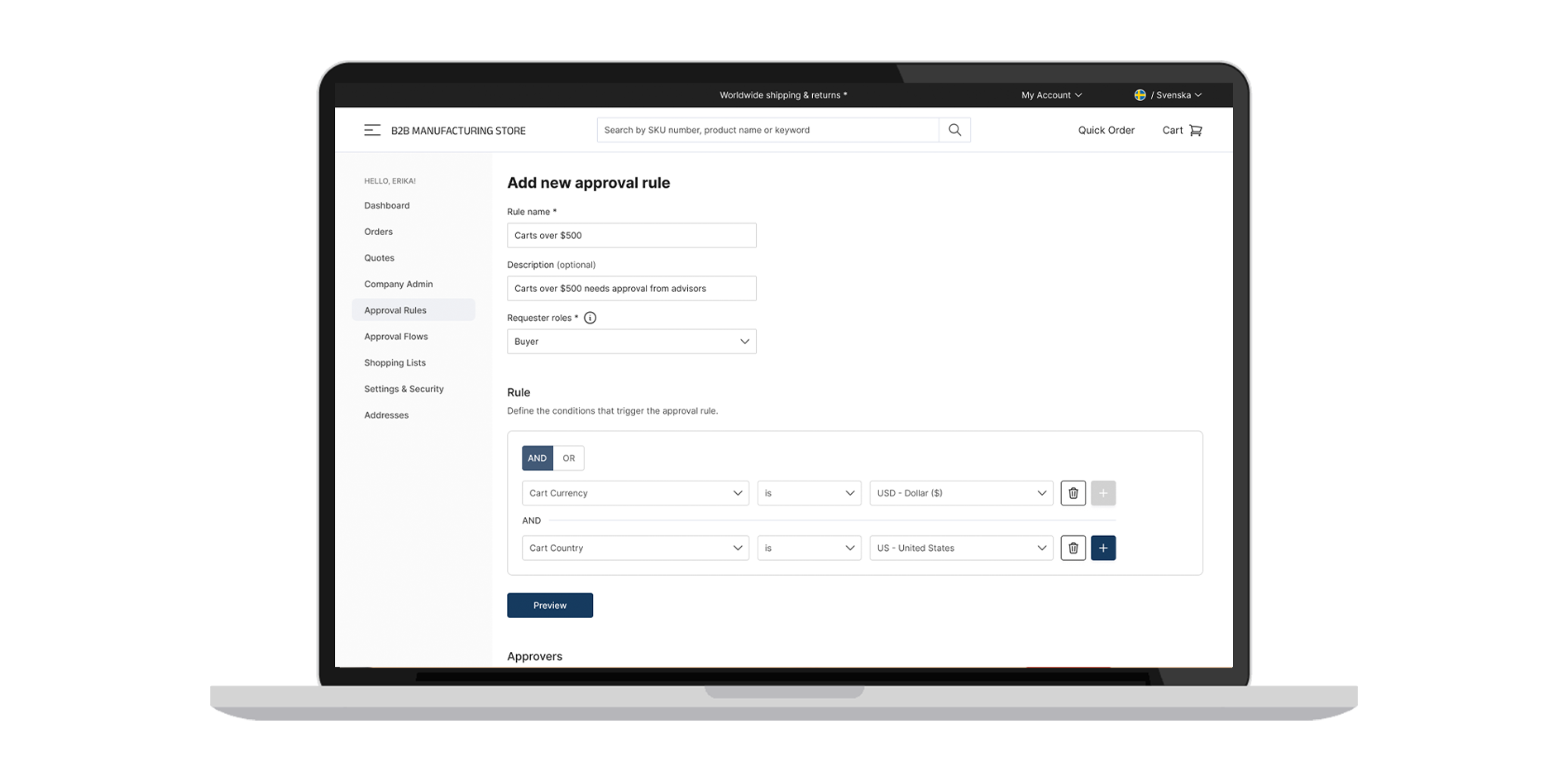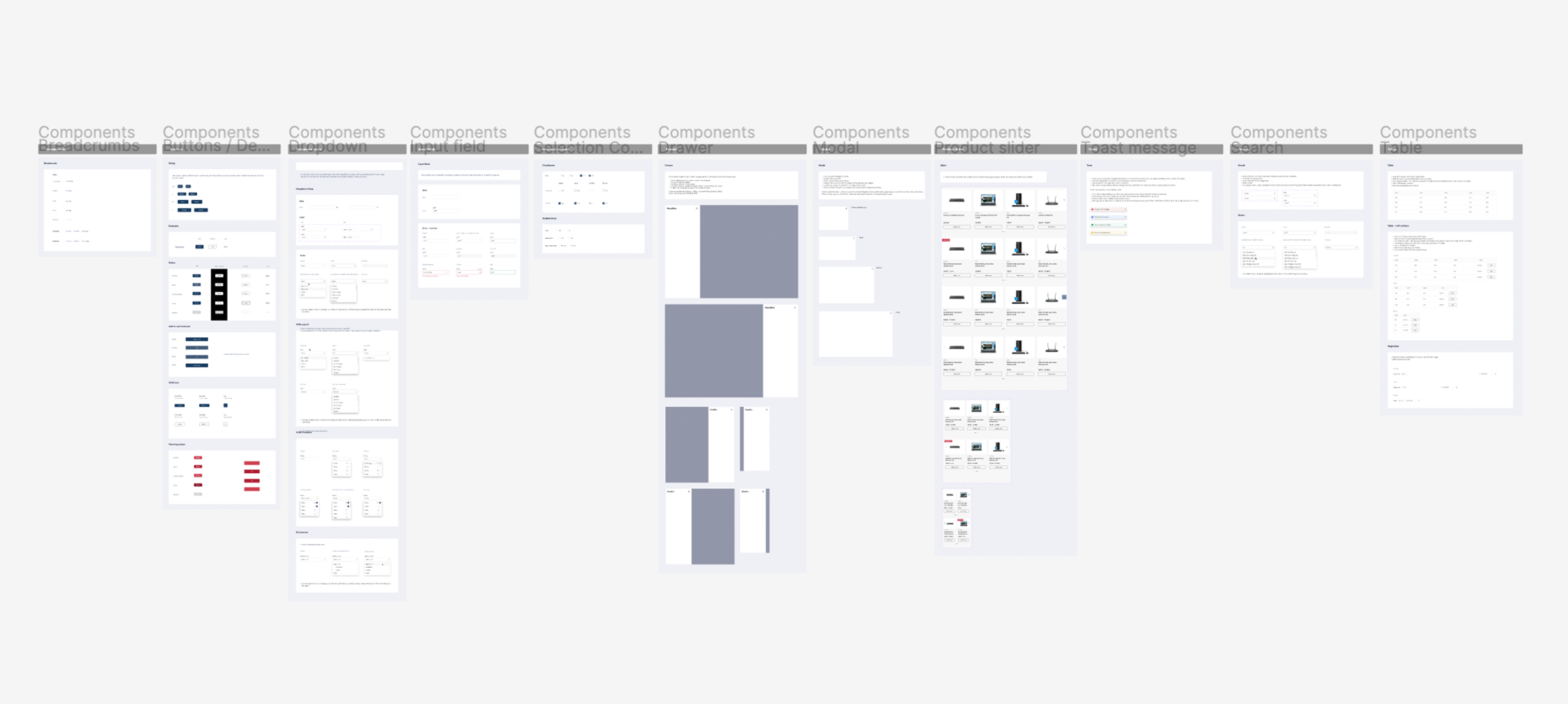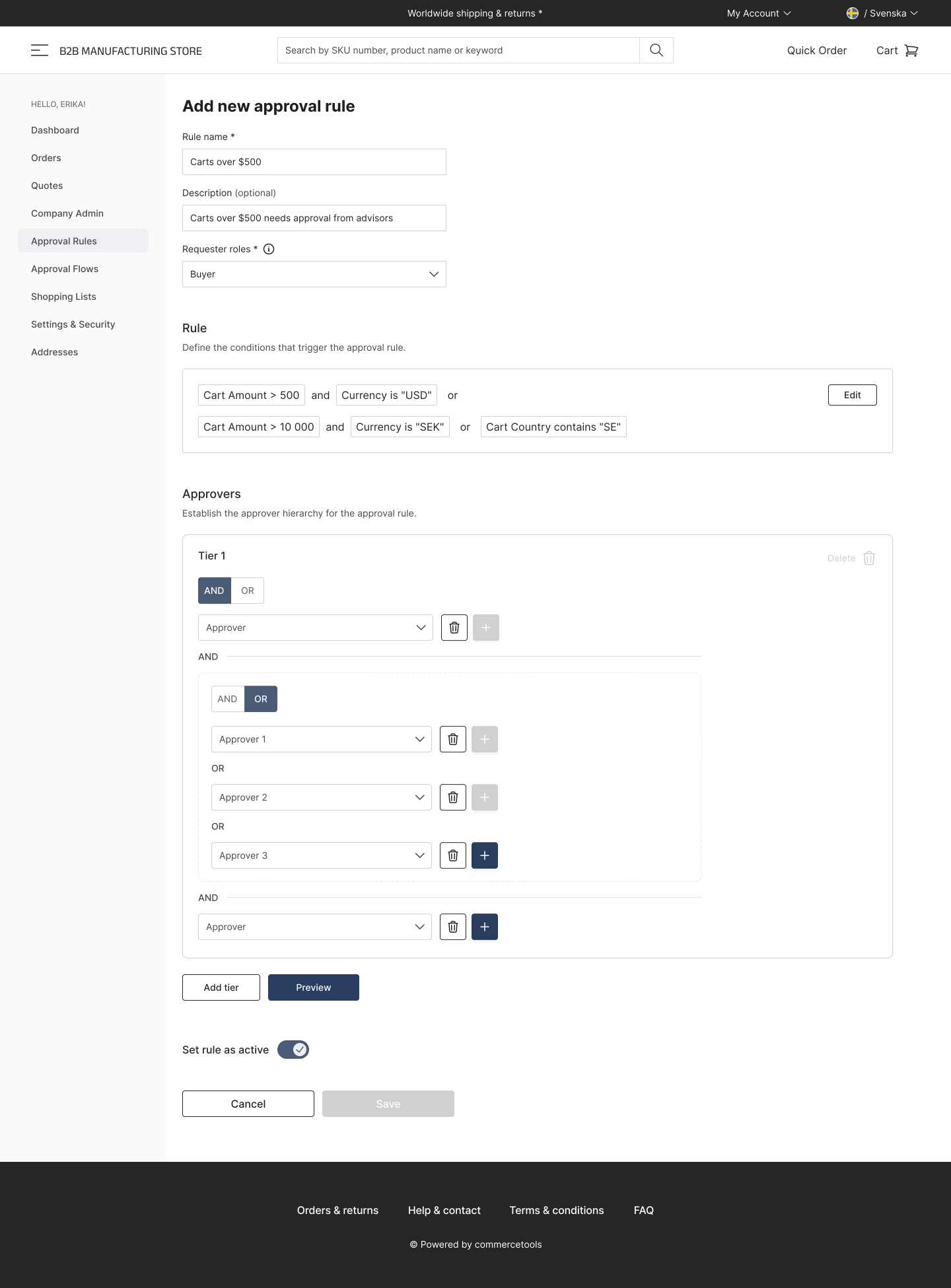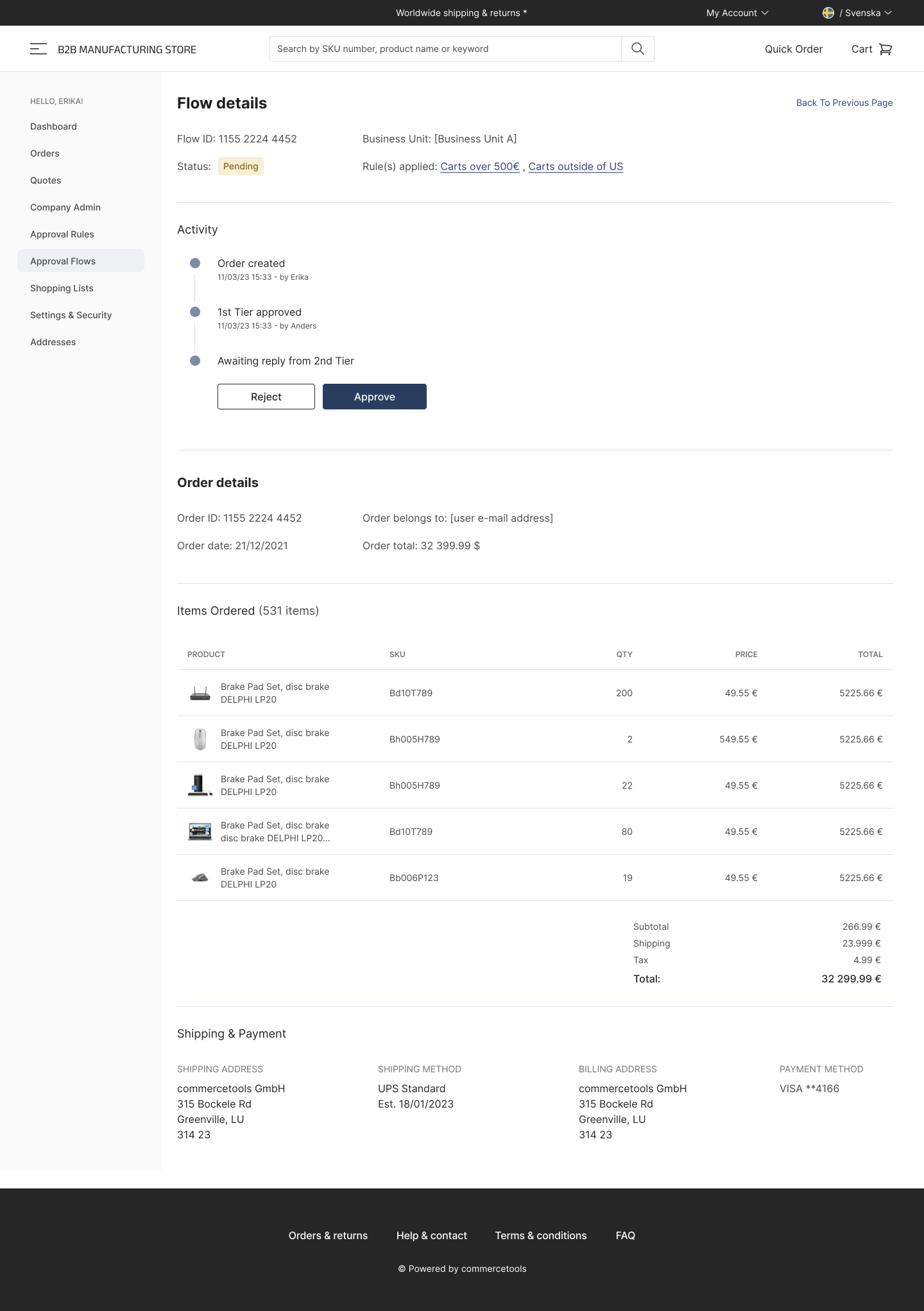Background
In B2B eCommerce, the lack of efficient order approval processes presents a significant challenge for large organizations, often resulting in operational delays and errors. Our project tackled this issue, focusing on streamlining and improving the management of order approvals for our B2B frontend users.
We developed frontend components for approval workflows, leveraging the commercetools composable APIs. My focus was on delivering user-friendly designs and straightforward workflows, specifically designed for the needs of B2B customers. By doing so, we achieved a significant reduction in complexity and an increase in efficiency, enabling businesses to accelerate their approval processes with our frontend B2B components.
Commercetools: API documentation







